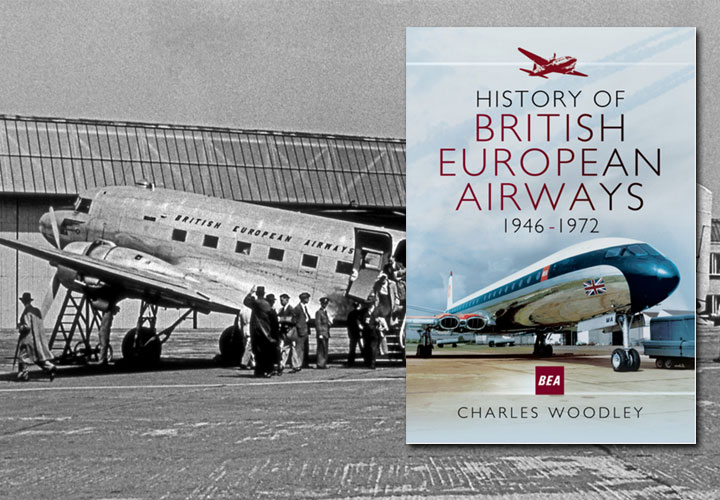
One thing comes to mind when reading this book on the history of one of Britain’s most notable airlines, and that is how different things might have been if the British government hadn’t dictated that its national carriers bought British manufactured aircraft.
As a result all manner of wonderful aircraft saw the light of day such as the Airspeed Ambassador, de Havilland Comet, Vickers Viking, Viscount and Vanguard, Handley Page Herald, Hawker Siddeley Trident and BAC One-Eleven. The results were mixed, with some proving more successful than others, but I’m glad they did exist.
British European Airways (BEA for short) was formed in 1946 as a division of British Overseas Airways Corporation to operate European scheduled services. It did in fact operate American Douglas DC-3s initially, which was mostly a result of the war surplus available. Flights flew out of the old Croydon Airport, and then moved to Northolt to the west of London.
When the new London Airport opened at what is now Heathrow in the late 1940s BEA operations were gradually transferred there, which was the beginnings of what would become the large hub operation seen today by British Airways.
After dabbling in many different routes both domestically and across Europe, and offering some lavish onboard service on its Silver Wing flights in addition to standard tourist class flights, BEA settled into growth. It entered the turboprop age with the Viscount, and later the jet age with the de Havilland Comet 4B and Trident.

In addition to its significant London hub, BEA also operated out of Birmingham and Manchester airports, and had bases in the Channel Islands, Scottish Highlands and Wales, with a dedicated helicopter operation.
In later years BEA Airtours was formed to take advantage of the leisure market to the Mediterranean, operating Comets and Boeing 707s.
Ultimately BEA would be merged back into BOAC in the early 1970s to form British Airways as we know it today. The process was not easy, and had been on the cards since 1959, with a formal dissolution of the company in 1974.
The recently updated book History of British European Airways 1946-1972 by Charles Woodley (Pen & Sword, ISBN 9781473886629) is a pleasantly thick volume on the subject. What at first might look like a standard pictorial history with captions is in fact a well-researched book stretching to 206 pages and charting the history of BEA and many more interesting aspects of the company.
Starting with an introduction to the airline, the book continues looking at its development and routes through the introduction of different aircraft types in the Northolt and Heathrow eras.
It then goes on to look at operations in post-war Germany, the Scottish network and air ambulance services, Channel Islands operations, Scilly Isles operations and Helicopter operations.
Then there are sections on BEA’s dedicated cargo flights, and on BEA Airtours.
Finally there are sections on the company structure, fleet policies, financial performance, training, livery changes, UK bases, and the ultimate amalgamation into British Airways.
 Charles Woodley is a seasoned aviation writer and historian and he has produced a stunning and detailed book here.
Charles Woodley is a seasoned aviation writer and historian and he has produced a stunning and detailed book here.
It’s packed with lots of great pictures throughout which really add to the story (although some of the full colour ones in the centre let it down as they’re a touch grainy).
This is a great book for your aviation bookshelf if you have any interest in British airlines and aircraft development.




